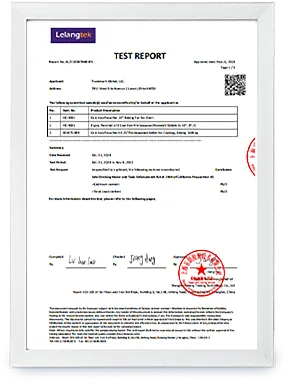
Quality Cast Iron Cookware Manufacturer for Your Culinary Needs
The Craftsmanship Behind Cast Iron Pan Manufacturing A Look Inside the Factory
In recent years, cast iron pans have surged in popularity, becoming a staple in kitchens around the world
. Their remarkable heat retention, even cooking, and natural non-stick properties have drawn in both novice cooks and professional chefs alike. But what lies behind the allure of these sturdy cookware items? A closer examination of the cast iron pan factory reveals the intricate process of crafting these culinary tools.At the heart of any cast iron pan factory is the raw material iron. The journey begins with the selection of high-quality pig iron, which is melted down in massive furnaces at temperatures exceeding 1,400 degrees Celsius. This molten iron is then carefully calibrated with alloyed metals to achieve the desired balance of durability and workability. The precision of this initial step is paramount as it sets the stage for the entire manufacturing process.
Once the iron reaches the appropriate consistency, the next phase involves pouring it into molds. The molds are usually made from sand, clay, and other materials that can withstand high temperatures. Factories use both traditional hand-crafted molds and advanced automated systems, depending on the scale of production. As the molten iron is poured, it takes the shape of the pan, whether it be a classic skillet, a Dutch oven, or specialty cookware.
Cooling is the next critical step in manufacturing. After the iron is poured into molds, it must cool and solidify to develop its structural integrity. This process typically takes several hours. Factories often use a combination of ambient cooling and water baths to expedite the cooling process while ensuring consistent quality. Once the pans are hardened, they are removed from their molds, revealing the rough, pitted surface characteristic of cast iron cookware.
cast iron pan factory

The pans are then subjected to a rigorous finishing process. This involves grinding and polishing to eliminate any imperfections and achieve a smooth surface. Skilled workers meticulously inspect each pan, ensuring that only those meeting high standards of quality move forward. Any pans that do not meet these standards are recycled back into the melting process, minimizing waste and maximizing efficiency.
After the finishing touches, it's time to season the pans. This step is crucial in imparting the non-stick qualities that cast iron cookware is known for. The factory applies a layer of vegetable oil to the surface and places the pans in an oven. Through a process called polymerization, the oil bonds with the cast iron, creating a durable coating that enhances the cooking experience. This seasoning is what gives cast iron pans their distinctive dark color and helps to develop a natural non-stick layer over time.
Once seasoned, the pans undergo a final quality inspection. This stage ensures that each piece not only meets functional standards but also exhibits an aesthetic appeal. The branding and packaging process follows, with the pans being boxed and prepared for shipment to retailers and consumers worldwide.
In conclusion, the manufacturing of cast iron pans is a blend of traditional craftsmanship and modern industrial techniques. Each step of the process, from the careful selection of raw materials to the meticulous finishing and seasoning, plays a vital role in creating a product that is both durable and beloved. As consumers enjoy cooking with these versatile kitchen tools, they can appreciate the intricate journey each cast iron pan takes from factory floor to kitchen counter. With sustainable practices and robust craftsmanship at every stage, the legacy of cast iron pans continues to thrive, ensuring their place in culinary traditions for generations to come.
-
Season Cast Iron Perfectly with GPT-4 Turbo TipsNewsAug.01,2025
-
High Quality Cast Iron Cookware - Baixiang County Zhongda MachineryNewsAug.01,2025
-
Premium Cast Iron Pan: Durable & Perfect HeatNewsAug.01,2025
-
High Quality Kitchen Durable Black Round Cast Iron Cookware Pancake Crepe Pan-Baixiang County Zhongda Machinery Manufacturing Co., Ltd.NewsAug.01,2025
-
Cast Iron Cookware - Baixiang County Zhongda Machinery | Nonstick, Heat ResistanceNewsAug.01,2025
-
High Quality Kitchen Durable Black Round Cast Iron Cookware - Baixiang County Zhongda Machinery | Non-Stick, Heat Retention, DurableNewsJul.31,2025


